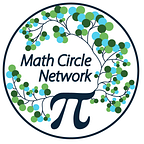Math and Fairness
A Key Contribution of Math to Social Justice
By Kyle R. Evans and Megan Staples
Math is often viewed by students as both important (for tips, taxes, and good test scores for college) and at the same time exceedingly useless (when will I use the quadratic formula in the real world??). Yet math has an incredibly useful role to play when it comes to issues of great import to our society and democracy. Beyond something written down in moral code, math is a key tool in determining whether something is or is not fair in our society.
Our Math Teachers’ Circle focuses on problem solving related to issues of social justice. While there are many components that can define “social justice,” part of the definition that we rely on is “ensuring the fair distribution of human and material resources in society” (Berry, Conway, Lawler, & Staley, 2020).
For a recent MTC session on voting systems, we reflected on the various ways fairness is operationalized in mathematics and how each can be seen in our society. Before reading further, pause and think about the question:
What makes something “fair” from a mathematical perspective?
Interestingly, just as students get more and more sophisticated in their thinking about issues of fairness, the math tools students learn that can identify and examine fairness become more and more sophisticated. We offer three examples that demonstrate the relationship between mathematics, fairness, and our society.
Elementary Grades
Fairness is “everyone gets the same amount.”
We see this readily throughout the elementary math curriculum, where students equally divide quantities of cookies, pizza, and marbles.
If we look at this version of fairness in the world around us, we think about people having equal representation in local elections (one person, one vote), or everyone having the same opportunity (at least on paper) to participate in an event.
Middle School
Fairness is “everyone gets an appropriate amount relative to their needs or circumstances.”
In other words, the more you need, the more you get. This version of fairness plays out in the grade school curriculum with proportionality. For example, students calculate how much a person makes for a given number of hours of work, and how much they should make if they work twice the number of hours.
Looking at this version of fairness in our world, we see that the number of House representatives for a state (in the U.S.) is proportional to the state’s population. (Note that this proportionality is not reflected in the Electoral College system.)
High School
Fairness is “outcomes that are true to a claim or standard.”
Students encounter this idea when they study statistics and engage questions like the accuracy of a company’s claim about how long their batteries last. In the context of our world, we look to statistics to help us ferret out faulty claims or systematic bias.
For example, a guiding principle for our system is that individuals should be tried by a jury of their peers. Lawyers in the court case Casteneda v. Partida[1] used the binomial distribution and z-scores to demonstrate that not only was Casteneda, a Mexican-American, not tried by a jury of his peers (a potential single-instance anomaly), but the system for jury selection in his Texas county effectively denied him that opportunity.
There are additional ways in which mathematics is used as a tool in our society to help us act fairly or examine issues of fairness. We use math to help us create measures and standards, and hope they approximate the world well, and fairly. We model potential outcomes as we try to figure out the impact of a new initiative and whether it disproportionately impacts different groups of people. We use Monte Carlo methods to create the set of possible outcomes, and their likelihood, in applications ranging from predicting election outcomes to quantifying partisan gerrymandering.
We leave our discussion here, with the hope that we have brought into view some ways that mathematics can help us examine fairness in our world, and have potentially inspired the desire to bring such contexts into classrooms!
About the Authors and the MTC4SJ
Kyle R. Evans is Visiting Assistant Professor of Mathematics at Trinity College in Hartford, Connecticut. Megan Staples is Associate Professor of Mathematics Education in the Neag School of Education at the University of Connecticut in Storrs, Connecticut.
The Mathematics Teachers’ Circle 4 Social Justice (MTC4SJ), led by Kyle Evans, Megan Staples, Scott Kapralos, and Georgina Rivera, is based in Connecticut and seeks to support teachers as mathematicians and social justice educators by promoting problem solving and critical conversations.
Footnote
[1] The authors thank Mark Myers for bringing this example to their attention.Reference
Berry III, R. Q., Conway IV, B. M., Lawler, B. R., & Staley, J. W. (2020). High school mathematics lessons to explore, understand, and respond to social injustice. Corwin Press.
